
The 1950s and 1960s were an era of unparalleled innovation and daring design in the automotive world. As the “Jet Age” took hold, fueled by post-war optimism, rapid economic growth in the United States, and a burgeoning desire for all things new and exciting, car manufacturers found themselves in an intense “product war.” This period saw Detroit’s finest styling studios—General Motors, Ford, Chrysler, Hudson, Studebaker-Packard, and others—churn out vehicles that were far more than mere transportation; they were bold statements of speed, futurism, and technological prowess, often embodying what many called “irrational excess.”
This era gave birth to a new segment of buyers, the “Jetsetter”—wealthy and fashionable individuals who traveled widely and frequently in style, embodying the very spirit of the age. These discerning customers sought not just luxury and performance but also “bragging rights” through owning low-volume production models or cutting-edge designs. Automobile designs of this period were profoundly influenced by the sleek lines of jets, the iconic tail fins of rockets, and the boundless possibilities of space-age optimism, transforming cars into land-based interpretations of aerial marvels.
Join us on a journey back to this captivating time as we explore ten extraordinary classic cars that truly defined the Jet Age aesthetic. Each vehicle, whether a groundbreaking concept or a powerful production model, tells a story of innovation, audacious styling, and engineering ambition. We’ll delve into their detailed specifications, remarkable performance figures, and the distinctive interiors that made them feel more like cockpits than car cabins, allowing you to experience the vibrant pulse of an era when the future was quite literally built on wheels.

1. **1956 Buick Centurion**Picture a car that looks like it rolled out of a sci-fi flick. The 1956 Buick Centurion, a definitive statement of Jet Age aesthetics, was showcased prominently at GM’s Motorama, captivating audiences with its visionary design. Its fiberglass body, a revolutionary material for the time, sculpted a form that was both aerodynamic and otherworldly, pushing the boundaries of what was considered possible in automotive styling. The car’s most striking feature, the glass bubble top, offered a panoramic view, further blurring the lines between automotive design and aeronautical engineering, making the driver feel as though they were piloting a personal spacecraft rather than navigating city streets.
Beneath its futuristic skin, the Centurion housed a potent 325 hp 322 V8 engine, an impressive power plant capable of propelling the concept to a top speed of 120 mph. However, its primary purpose was not outright speed, but rather to serve as a dazzling spectacle, a testament to Buick’s forward-thinking design capabilities. This blend of potent engine and captivating design solidified its role as a show car par excellence, demonstrating what was technically possible and stylistically desirable in the minds of designers of the era.
The interior of the Centurion was as innovative as its exterior, epitomizing the era’s obsession with future tech. A truly groundbreaking feature was the TV camera that fed a dashboard screen, essentially serving as an early, futuristic rearview camera—a technology decades ahead of its widespread adoption in production vehicles. The cabin itself was a vibrant red-and-white affair, a playful yet sophisticated fusion that evoked the classic aesthetics of a 1950s diner while simultaneously adopting the functional, instrument-laden feel of a cockpit. This bold design, coupled with its advanced features, marked it as a singular, influential concept, eventually becoming GM design chief Harley Earl’s personal ride, underscoring its unique status.
Read more about: Gearhead Gold: Unearthing the 14 Most Underrated Muscle Cars Ever Built

2. **1955 Chrysler Falcon**The 1955 Chrysler Falcon was an ambitious two-seater concept, clearly positioned by Chrysler to challenge the established dominance of the Chevrolet Corvette in the burgeoning American sports car market. Designed by the visionary Virgil Exner, its sleek, low-slung body exuded a refined yet powerful Jet Age appeal, hinting at speed and sophistication. The subtle tail fins and a distinctly low nose cleverly mimicked the profile of a jet, signaling agility and forward momentum even at a standstill, embodying Chrysler’s aspiration to enter the performance-oriented luxury segment with a stylish, competitive offering.
Powering this elegant machine was a 276 V8 engine, delivering a respectable 170 hp, which was quite formidable for its time. This output allowed the Falcon to accelerate from 0 to 60 mph in approximately 10 seconds, and achieve a top speed approaching 115 mph. Such performance credentials positioned it not just as a design exercise but as a genuinely capable sports car, hinting at the potential that lay within Chrysler’s engineering capabilities and its readiness to compete directly with its rivals in the rapidly expanding market for personal performance vehicles.
Inside, the Falcon embraced a more intimate and focused driving experience. Its tight interior, featuring supportive bucket seats, immediately conveyed a sense of purpose and driver engagement. A simple gauge cluster, angled ergonomically toward the driver, further reinforced a “fighter-pilot” feel, emphasizing control and precision over ostentation. Although the 1955 Chrysler Falcon remained a concept and never saw production, its distinctive design language and emphasis on performance profoundly influenced subsequent Chrysler designs, most notably the iconic 300 series, leaving an indelible mark on the brand’s aesthetic trajectory.
Read more about: Pure Automotive Gold: 14 Masterpiece Cars from the 1960s That Still Reign Supreme
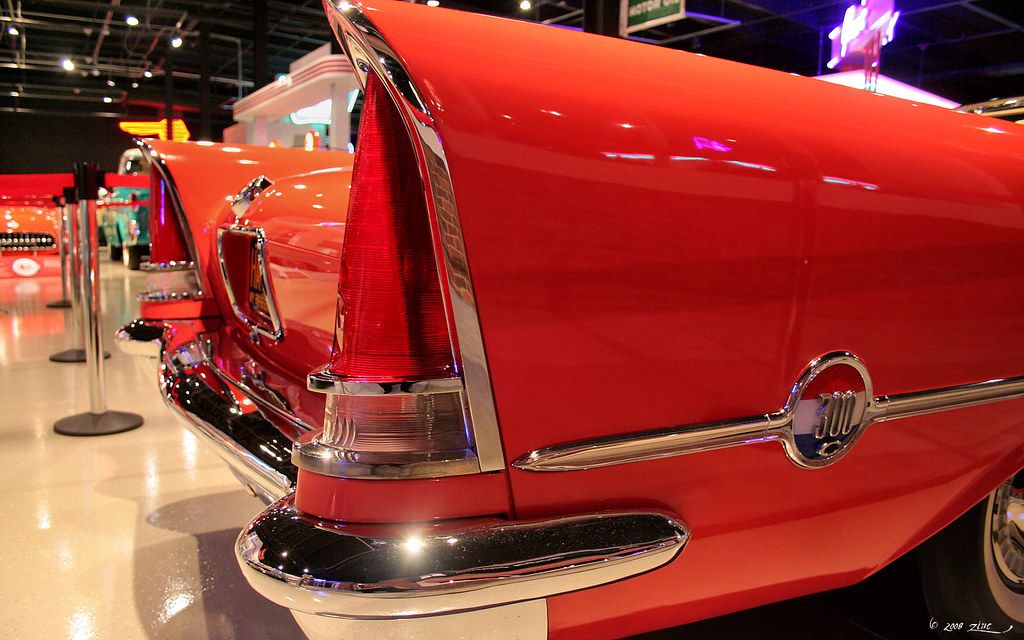
3. **1957 Chrysler 300C**The 1957 Chrysler 300C wasn’t just a car; it was a veritable beast that perfectly embodied the swagger and power of the Jet Age, representing the pinnacle of the famous 300 letter-series cars. For the “Jetsetter” seeking both style and unmatched performance, the 300C delivered in spades, defining a new standard for American luxury and power. Its imposing exterior boasted sharp tail fins that evoked a jet’s thrust, complemented by a wide, aggressive grille reminiscent of a jet intake, creating an unmistakable and dominant presence on the road.
Under the hood, the 300C packed a formidable 392 Hemi V8, a legendary engine that pumped out an astonishing 375 hp, later offered with dual-quad HEMI power for the 300s. This immense power translated into breathtaking performance: 0 to 60 mph in a mere 7.8 seconds and an astounding top speed of 145 mph. These figures were not just impressive; they were record-setting, earning unofficial stock car records at Daytona’s Flying Mile, including an average speed of 134 mph, cementing its status as a true high-performance machine and giving its owners unparalleled bragging rights.
Beyond its raw power, the interior of the 300C offered a blend of luxury and cutting-edge technology. Occupants were treated to sumptuous leather seats, a highly innovative pushbutton TorqueFlite shifter, and the then-rare convenience of optional air conditioning, adding to its premium appeal. This “luxury Jet Age hot rod” also featured options like power steering, brakes, windows, Solex safety glass, and a six-way power front seat. The limited production numbers—484 convertibles and 1,918 300C coupes in 1957—only added to its allure, making every owner “all smiles when the hood opened to show off the massive Hemi,” solidifying its legacy as an early muscle car and a favorite among the Jetsetter crowd.
Car Model Information: 2014 Chrysler 300C John Varvatos Luxury
Categories: All set index articles, Articles with short description, Set index articles on cars, Short description is different from Wikidata
Summary: The Chrysler Corporation has used the designation Chrysler 300C to refer to two separate unrelated vehicles from different eras:
The 1957 Chrysler 300C is that year’s version of the Chrysler 300 “letter series”; a large, high-performance luxury coupe sold in very limited numbers.
The 2005 Chrysler 300C, launched in 2004, the top-of-the-line Chrysler 300, usually outfitted with a 5.7L Hemi V8 Magnum engine.
Get more information about: Chrysler 300C
Buying a high-performing used car >>>
Brand: Chrysler Model: 300C
Price: $12,500 Mileage: 119,351 mi.
Read more about: The 13 Worst-Performing Cars in Their Segment: A MotorTrend Deep Dive into Automotive Disappointments
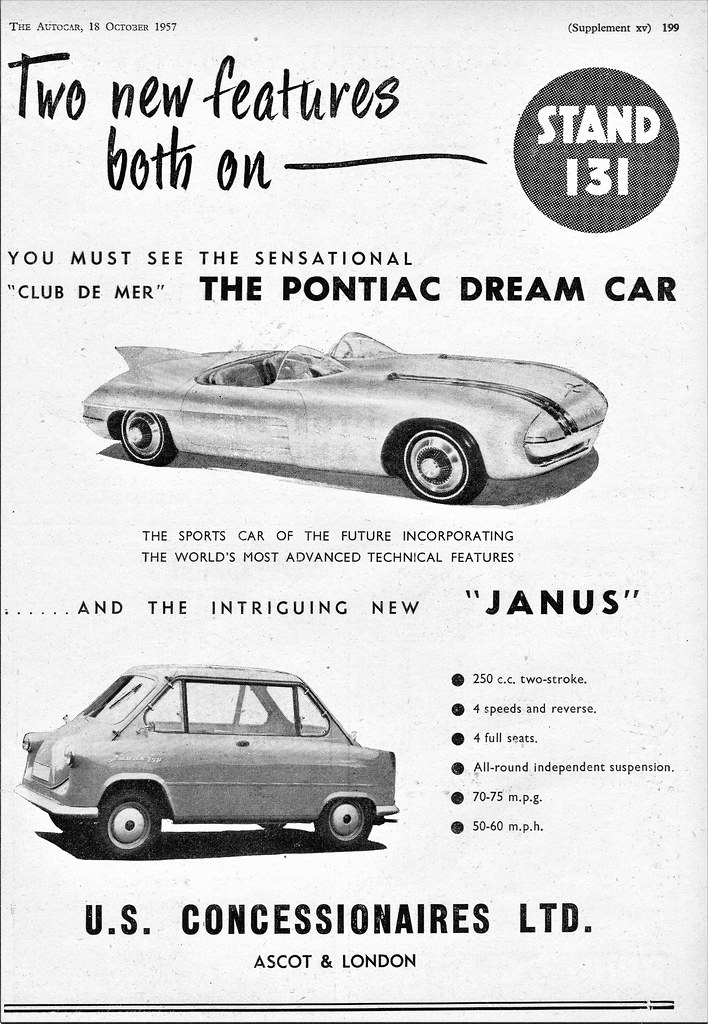
4. **1956 Pontiac Club de Mer**The 1956 Pontiac Club de Mer was a stunning concept car that appeared perpetually poised for flight, an embodiment of pure Jet Age drama and imaginative design. Crafted with a lightweight aluminum body, its design was exceptionally sleek, featuring a low, shark-like nose that sliced through the air with elegant aggression, foreshadowing aerodynamic principles. Perhaps its most dramatic visual elements were the distinctive fins that ingeniously flipped up, not just for aesthetic flair but to reveal the car’s headlights, a truly imaginative integration of form and function that epitomized futuristic thinking.
Powering this avant-garde machine was a robust 287 V8 engine, generating a substantial 300 hp, which suggested a performance potential that would have been impressive had it ever reached production. This considerable grunt, even in a concept, highlighted Pontiac’s capability and ambition. However, as it remained a one-off dream car showcased at Motorama, no concrete performance data exists, allowing its theoretical capabilities to fuel the imagination of enthusiasts about what could have been if this concept had truly taken to the road.
The interior design of the Club de Mer was a study in aeronautical minimalism, placing a strong emphasis on style over traditional functionality. It featured innovative aeronautical screens and a spartan dashboard, creating a cockpit-like environment that reinforced its jet-inspired aesthetic and driver-focused appeal. Though it never transitioned from concept to production, the Club de Mer’s groundbreaking design left an indelible and lasting impression, serving as a powerful demonstration of Pontiac’s visionary approach to automotive styling during the height of the Jet Age.
Car Model Information: 2024 Honda Civic LX
Name: Pontiac Club de Mer
Aka: XP-200 / SO 2488
Manufacturer: Pontiac (automobile)
Class: Concept car,sports car
Production: 1956 (one prototype built)
BodyStyle: Roadster (automobile)
Engine: 287 cuin
Abbr: on
Transmission: transaxle
Length: 180.001 in
Height: 38.401 in
Wheelbase: 103.251 in
Predecessor: Pontiac Strato-Streak
Successor: Pontiac Banshee
Categories: Articles with short description, Pontiac concept vehicles, Short description is different from Wikidata
Summary: The Pontiac Club de Mer was a purpose-built, experimental car that was built by Pontiac for the General Motors Motorama in 1956 to celebrate General Motors’ commitment to futuristic design. The brainchild of GM engineer-designer, Harley Earl (Paul Gillian was also involved, being the Pontiac Studio head at the time), the “de Mer”, or French for “of the sea”, was a two-door sport roadster that incorporated innovative breakthrough styling like a sleek, low-profile body encasing a large powerplant, a design trend used widely in LSR (land speed record) trials at Bonneville Salt Flats in Utah during the 1950s. One Club de Mer prototype was constructed and unveiled, along with another quarter-scale model, in Miami, Florida. As per GM’s “kill order”, it was reportedly scrapped in 1958.
Only the model exists today, which was owned by Joseph Bortz of Highland Park, IL. until it was sold to noted car collector Ron Pratt at the 2007 Barrett-Jackson Classic Car Auction for $75,000. A running replica based on a 1959 Pontiac chassis was also built by Marty Martino. Taking three years to complete, it sold for $110,000 at the 2009 Barrett-Jackson Auction in Arizona.
Get more information about: Pontiac Club de Mer
Buying a high-performing used car >>>
Brand: Pontiac Model: Club de Mer
Price: $21,650 Mileage: 17,979 mi.
Read more about: Lady Gaga’s Epic Garage Unveiled: A High-Octane Tour Through Her Wildly Diverse and Captivating Car Collection

5. **1958 Oldsmobile 98 J2 Golden Rocket**The 1958 Oldsmobile 98 J2 Golden Rocket was a true spectacle of its era, a chrome-heavy monster that perfectly encapsulated the “flash and chrome” ethos of 1958 with unmistakable Jet Age flair. Its sheer presence, characterized by peaked fins that soared skyward and a wide, aggressive grille, made it look like a jet about to take off on wheels, commanding attention wherever it went. This bold, unapologetic styling was a direct response to the era’s demand for “irrational excess,” making a statement that “When too much was not enough.”
At the heart of this magnificent machine was a potent 371 V8 engine, further enhanced by the desirable J2 option (code W), which was specifically designed for those seeking an extra kick in performance. This performance package incorporated three two-barrel carburetors, linked via a progressive throttle linkage, to unleash 312 hp at 4,600 RPM and a massive 415 lb-ft of torque. Weighing in at over 4,500 pounds, this Olds could cruise effortlessly at 85 mph in quiet comfort, showcasing a remarkable blend of brute force and refined ride quality that appealed to those chasing both speed and status in equal measure.
The interior of the 98 J2 Golden Rocket was as lavish as its exterior was audacious. It boasted a tri-tone leather interior, reflecting the era’s taste for opulent design and attention to detail. Innovative features like a “transportable” AM radio offered entertainment on the go, while a padded dash enhanced safety, a growing concern in automotive design. The car also sported color-keyed hub caps with faux spinners, a Jetaway four-speed Hydramatic transmission, optional air-ride suspension, and 11-inch drum brakes, all contributing to an experience that screamed luxury, performance, and an unyielding commitment to Jet Age grandeur, making it a favorite for those who loved flash and power.
Car Model Information: 2024 Honda Civic LX
Name: Oldsmobile 88
Caption: 1996 Oldsmobile Eighty Eight LS
Manufacturer: Oldsmobile
ModelYears: 1949–1999
Class: Full-size car
Layout: FR layout
Predecessor: Oldsmobile L-Series
Successor: Oldsmobile Aurora
Categories: 1940s cars, 1950s cars, 1960s cars, 1970s cars, 1980s cars
Summary: The Oldsmobile 88 (marketed from 1989 on as the Eighty Eight) is a full-size car that was produced by the Oldsmobile Division of GM from 1949 until 1999. From 1950 until 1974, the 88 was the division’s most popular line, particularly the entry-level models such as the 88 and Dynamic 88. The 88 series was also an image leader for Oldsmobile, particularly in the model’s early years (1949–51), when it was one of the best-performing automobiles, thanks to its relatively small size, light weight, and advanced overhead-valve high-compression V8 engine. This engine, originally designed for the larger and more luxurious C-bodied 98 series, also replaced the straight-8 on the smaller B-bodied 78. With the large, high performance Oldsmobile Rocket V8, the early Oldsmobile 88 is considered by some to be the first muscle car.
Naming conventions used by GM since the 1910s for all divisions used alphanumeric designations that changed every year. Starting after the war, Oldsmobile changed their designations and standardized them so that the first number signified the chassis platform, while the second number signified how many cylinders. A large number of variations in nomenclature were seen over this long model run — Super, Golden Rocket, Dynamic, Jetstar, Delta, Delmont, Starfire, Holiday, LS, LSS, Celebrity, and Royale were used at various times with the 88 badge, and Fiesta appeared on some station wagons in the 1950s and 1960s. The name was more commonly shown as numerals in the earlier years (“Delta 88”, for example) and was changed to spell out “Eighty Eight” starting in 1989.
Get more information about: Oldsmobile 88
Buying a high-performing used car >>>
Brand: Oldsmobile Model: 98 J2 Golden Rocket
Price: $21,650 Mileage: 17,979 mi.
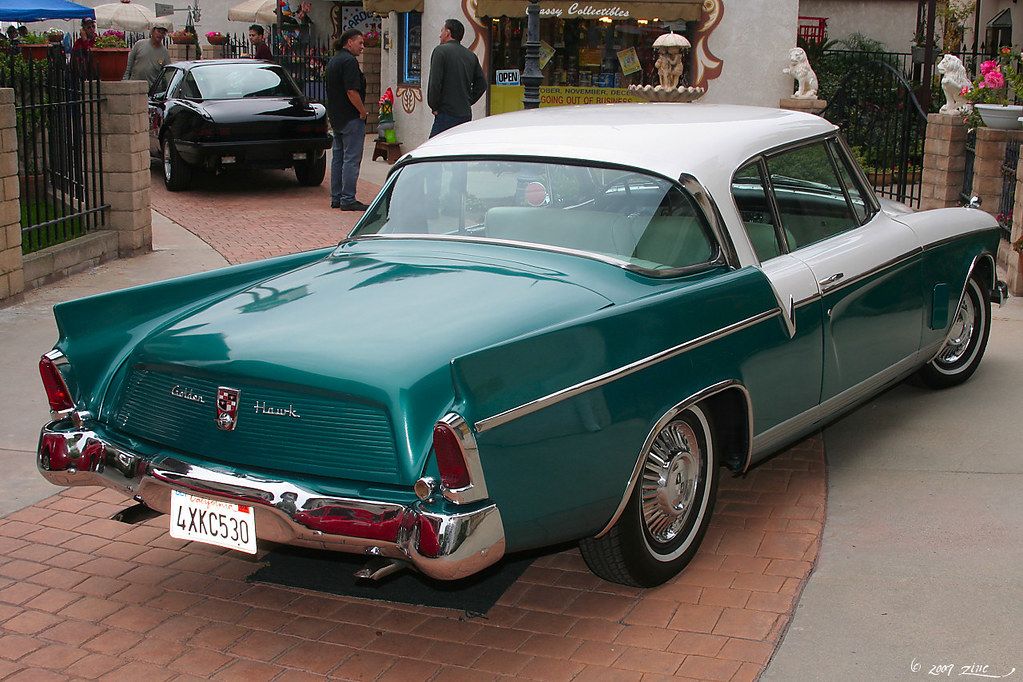
6. **1956 Studebaker Golden Hawk**Picture a car that truly blended jet-inspired looks with formidable power. The 1956 Studebaker Golden Hawk, a sleek pillarless coupe, featured elegant lines and modest fins, giving it an undeniable fighter-jet vibe. It was a distinctive machine, confidently staking its claim in an era of audacious automotive design.
Beneath its stylish exterior, the Golden Hawk initially packed a potent 352 V8 engine, later enhanced with a McCulloch supercharger to unleash a robust 275 hp. This significant power boost propelled it from 0 to 60 mph in a swift 7.8 seconds, allowing it to outpace many of its rivals on the open road. It was a true performance contender, offering an exhilarating driving experience.
Inside, the cabin exuded a sophisticated charm with its leather-lined interior. A vacuum gauge on the dash added a technical, almost aircraft-like feel, reinforcing its high-performance credentials. Uniquely, it also provided comfortable rear seating for three, skillfully combining sportiness with a practical touch that was rare in its class.
With only 4,071 units ever built, the Golden Hawk stood out as a rare gem, carving a niche for itself against automotive giants like the Corvette and Thunderbird. For the discerning “Jetsetter” who coveted both thrilling performance and exclusive ownership, this Studebaker offered unparalleled bragging rights, solidifying its legacy as a formidable classic.
Car Model Information: 2024 Honda Civic LX
Layout: FR layout
Caption: 1956 Studebaker Golden Hawk
Name: Studebaker Golden Hawk
Manufacturer: Studebaker
Assembly: Studebaker Corporation#Studebaker Factories,South Bend, Indiana,United States,Studebaker Canada,Hamilton, Ontario,Canada
BodyStyle: hardtop
Categories: All articles needing additional references, All articles with unsourced statements, Articles needing additional references from June 2011, Articles with short description, Articles with unsourced statements from January 2016
Summary: The Studebaker Golden Hawk is a two-door pillarless hardtop personal luxury car produced by the Studebaker Corporation of South Bend, Indiana, between 1956 and 1958.
Get more information about: Studebaker Golden Hawk
Buying a high-performing used car >>>
Brand: Studebaker Model: Golden Hawk
Price: $21,650 Mileage: 17,979 mi.
Read more about: Beyond the Big Three: 15 Forgotten Car Brands from the ’60s and ’70s That Deserve Another Look
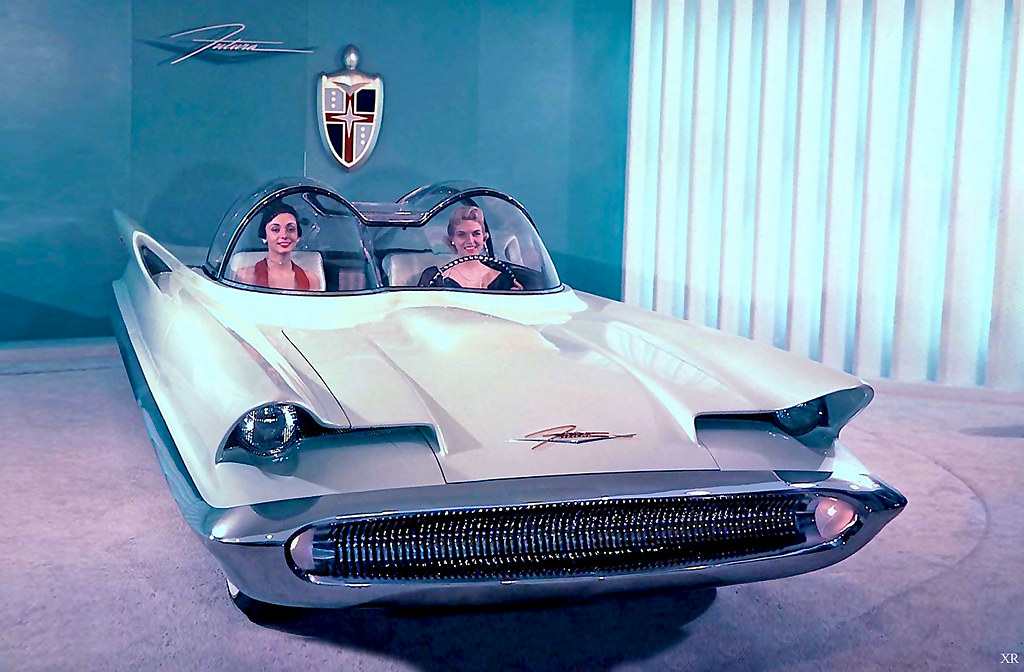
7. **1955 Lincoln Futura**The 1955 Lincoln Futura was more than just a car; it was a breathtaking concept that appeared destined for an interstellar voyage, utterly redefining automotive aesthetics. Its utterly dramatic styling was characterized by an astonishing double-domed canopy and sharply defined fins, meticulously mimicking a jet’s fuselage. This vehicle wasn’t merely transportation; it was a bold, rolling vision of the future.
While the Futura’s substantial 368 V8 engine delivered approximately 225 hp, outright performance was never its primary focus. This concept was engineered primarily as a dazzling showcase of revolutionary design, pushing the very limits of automotive styling and imagination. It functioned as a spectacular, futuristic sculpture, designed to captivate and inspire audiences worldwide.
Stepping inside revealed an interior as avant-garde as its exterior, featuring a sweeping wraparound dash adorned with both analog gauges and innovative pushbutton controls. This cabin truly felt like an advanced aircraft cockpit, offering an immersive experience that transcended traditional automotive interiors. It was a powerful testament to the boundless imagination of its visionary designers.
Although this magnificent one-off show car never entered production, it achieved immortal fame far beyond the auto show circuit. It was famously painted pearl white and dramatically transformed into the iconic 1966 Batmobile, forever etching its place in pop culture history. The Futura remains a definitive symbol of Jet Age excess and groundbreaking futuristic lines, inspiring generations of enthusiasts.
Read more about: Beyond Nostalgia: 14 Legendary Classic Cars That Deserve a High-Performance Comeback Today

8. **1951 GM LeSabre**Another visionary creation from the legendary Harley Earl, the 1951 GM LeSabre was a bold statement—a rolling laboratory of Jet Age experimentation and cutting-edge design. Its advanced aluminum body, elegantly swept-back fins, and distinctive jet-inspired nose collectively embodied pure innovation, setting a new benchmark for automotive styling. This vehicle was a powerful declaration about the future direction of technology and aesthetics.
Powering this sleek machine was a supercharged 215 V8 engine, delivering an impressive 335 hp. This robust output enabled the LeSabre to accelerate from 0 to 60 mph in approximately 9 seconds, a remarkable feat for its time. It showcased an extraordinary blend of advanced engineering and thrilling performance, making it a true standout.
The interior was equally revolutionary, packed with features that were decades ahead of their widespread adoption. It boasted a pioneering moisture sensor that automatically raised the convertible top, convenient electric windows, and a futuristic dash complete with aircraft-style gauges. This cabin truly felt like a pilot’s command center, brilliantly merging luxury with cutting-edge functionality.
Following its initial show circuit, the LeSabre served as Harley Earl’s personal daily driver, a testament to its practical functionality despite its conceptual nature. Its profoundly influential design elements subsequently shaped numerous GM vehicles, most notably the iconic Cadillac Eldorado. The LeSabre stands as an enduring monument to Earl’s visionary genius and its lasting impact on automotive design.

9. **1956 Firebird II**The 1956 GM Firebird II was nothing short of a space-age marvel, conceived with a lightweight titanium body and built for a future that seemed astonishingly near. Its striking appearance, complete with an expansive bubble canopy and dramatic tail fins, gave it the undeniable look of a vehicle that had flown directly from a jet fighter’s playbook. This concept was a daring glimpse into the potential of autonomous, guided transportation systems.
At the heart of this incredible machine was a 200 hp gas turbine engine, a truly revolutionary choice for an automobile. While it idled at an astounding 22,000 rpm and theoretically could achieve speeds up to 200 mph, its immense noise necessitated ear protection for occupants. This experimental powerplant spectacularly showcased GM’s fearless ambition in exploring alternative propulsion systems.
Designed as a luxurious rolling sci-fi lounge, the interior of the Firebird II was replete with amenities for a visionary future. It featured a television for passenger entertainment, innovative swiveling seats designed for enhanced social interaction, and even a built-in refrigerator. These luxurious and futuristic touches vividly illustrated a comprehensive vision for automated family travel, far removed from conventional driving experiences.
Although the Firebird II never made it to production, it served as an extraordinary declaration of GM’s wild Jet Age ambitions. It pushed boundaries not only in its radical design and revolutionary propulsion but also in envisioning an entirely new mode of transportation. This concept remains a powerful symbol of mid-century American ingenuity and its boundless optimism for the future.
Car Model Information: 2024 Honda Civic LX
Categories: All articles with unsourced statements, Articles with short description, Articles with unsourced statements from June 2014, Cars powered by gas turbines, Commons category link is on Wikidata
Summary: The General Motors Firebird comprises a quartet of prototype cars that General Motors (GM) engineered for the 1953, 1956, and 1959 Motorama auto shows. The cars’ designers, headed by Harley Earl, took Earl’s inspiration from the innovations in fighter aircraft design at the time. General Motors never intended the cars for production, but rather to showcase the extremes in technology and design that the company was able to achieve.
GM preserved the prototype cars at the GM Heritage Center in Sterling Heights, Michigan. Models of the cars are in the permanent collection of the Henry Ford Museum in Dearborn, and the cars still make regular appearances at car shows.
The tradition of offering prototype vehicles continued with the Pontiac Banshee series. From 1967 to 2002, the Pontiac division of GM marketed its Firebird line of pony cars, which had no direct relation to these series of Firebird concept cars.
Get more information about: General Motors Firebird
Buying a high-performing used car >>>
Brand: GM Model: Firebird II
Price: $21,650 Mileage: 17,979 mi.
Read more about: Lady Gaga’s Epic Garage Unveiled: A High-Octane Tour Through Her Wildly Diverse and Captivating Car Collection
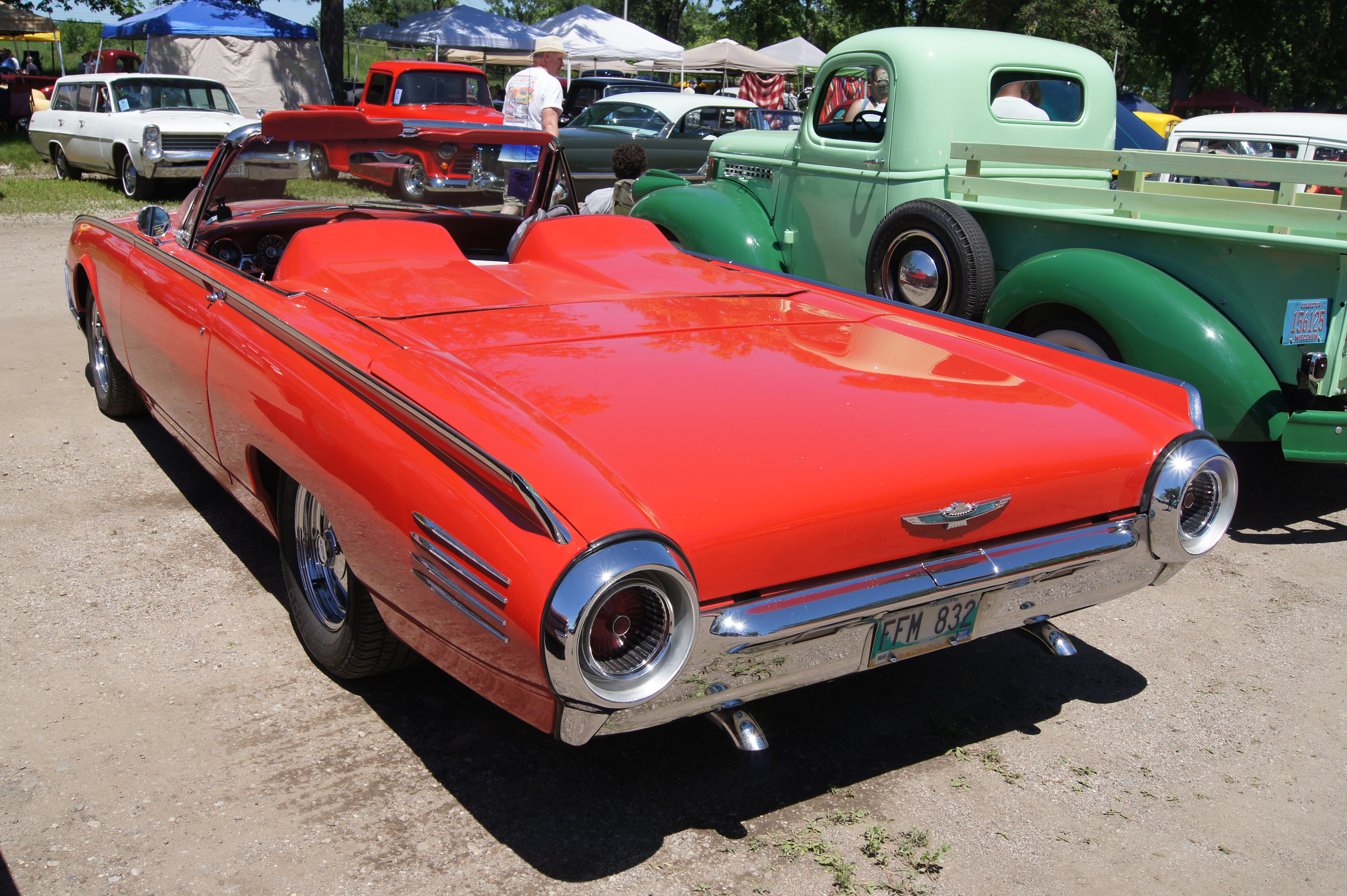
10. **1961 Ford Thunderbird**The 1961 Ford Thunderbird masterfully translated Jet Age style into a widely available production vehicle, successfully democratizing futuristic design. Its sleek, aerodynamic body incorporated a distinctive jet-tube grille and subtly integrated tail fins, beautifully evoking the silhouette of a fighter jet. This model immediately became an icon, perfectly capturing the era’s pervasive optimistic spirit and forward-thinking aesthetics.
Under the hood, the Thunderbird housed a potent 390 V8 engine that produced a robust 300 hp. This formidable power enabled it to accelerate from 0 to 60 mph in approximately 8.5 seconds and achieve an impressive top speed of 125 mph. It offered a compelling blend of thrilling performance and refined cruising capability, transforming every drive into a memorable event.
The interior was a masterpiece of thoughtful design and innovative functionality, emphasizing a distinct cockpit-like feel. It featured a unique “Swing-Away” steering wheel, which conveniently pivoted for effortless driver entry and exit, alongside a wraparound dash adorned with elegant chrome-accented gauges. These meticulous details collectively created an immersive and luxurious driving environment.
Available as both a stylish coupe and a luxurious convertible, the 1961 Thunderbird was a resounding commercial success, selling over 73,000 units. It quickly became a significant cultural icon of the era, embodying the perfect fusion of luxury, performance, and the pervasive optimism of the Jet Age. Its enduring legacy continues to captivate enthusiasts to this very day.
Car Model Information: 2003 Ford Thunderbird
Name: Ford Thunderbird
Caption: 1957 Thunderbird
Manufacturer: Ford Motor Company
Production: unbulleted list
ModelYears: unbulleted list
Class: unbulleted list
Layout: Front-engine, rear-wheel drive layout
Categories: 1960s cars, 1970s cars, 1980s cars, 1990s cars, 2000s cars
Summary: The Ford Thunderbird is a personal luxury car manufactured and marketed by Ford Motor Company for model years 1955 to 2005, with a hiatus from 1998 to 2001.
Ultimately gaining a broadly used colloquial nickname, the T-Bird, the model was introduced as a two-seat convertible, subsequently offered variously in a host of body styles including as a four-seat hardtop coupe, four-seat convertible, five-seat convertible and hardtop, four-door pillared hardtop sedan, six-passenger hardtop coupe, and five-passenger pillared coupe, before returning in its final generation, again as a two-seat convertible.
At its inception, Ford targeted the two-seat Thunderbird as an upscale model. The 1958 model year design introduced a rear seat and arguably marked the expansion of a market segment that came to be known as personal luxury cars, positioned to emphasize comfort and convenience over handling and high-speed performance.
Get more information about: Ford Thunderbird
Buying a high-performing used car >>>
Brand: Ford Model: Thunderbird
Price: $14,600 Mileage: 49,430 mi.
Read more about: The Raw Power on the Road: Six Legendary ’60s Muscle Cars Forged on the NASCAR Track
Our journey through these ten extraordinary vehicles reveals a pivotal moment in automotive history. The Jet Age was not merely a fleeting design trend; it was a profound cultural statement, a vibrant reflection of a nation’s forward-looking spirit and its unyielding belief in progress. From the audacious concepts that dared to redefine mobility to the powerful production models that brought a tangible piece of the future to every driveway, these cars are far more than just metal and chrome. They are enduring monuments to an era when the road ahead was as limitless as the sky above, constantly reminding us that true innovation often begins with a daring dream of flight.



